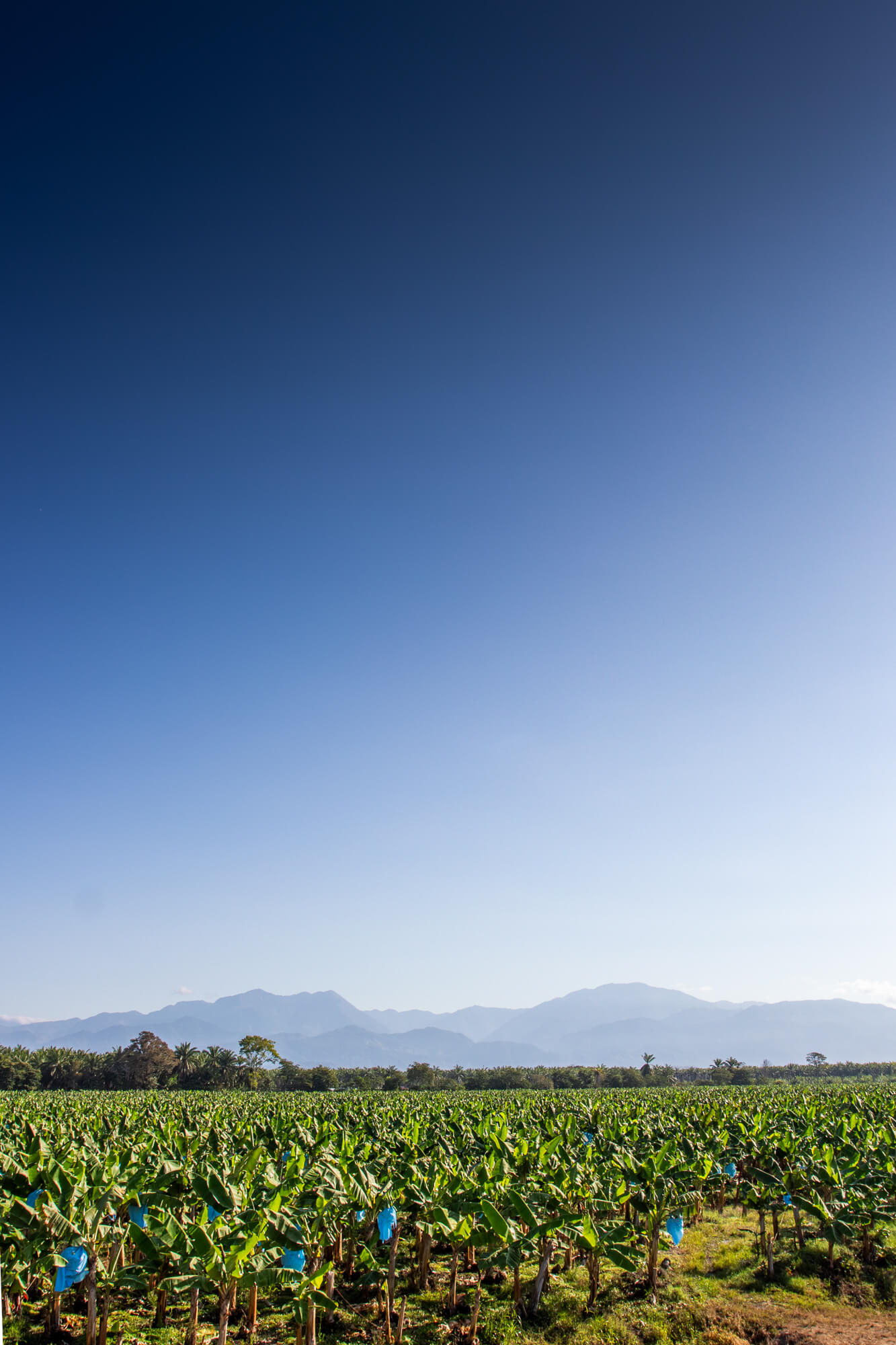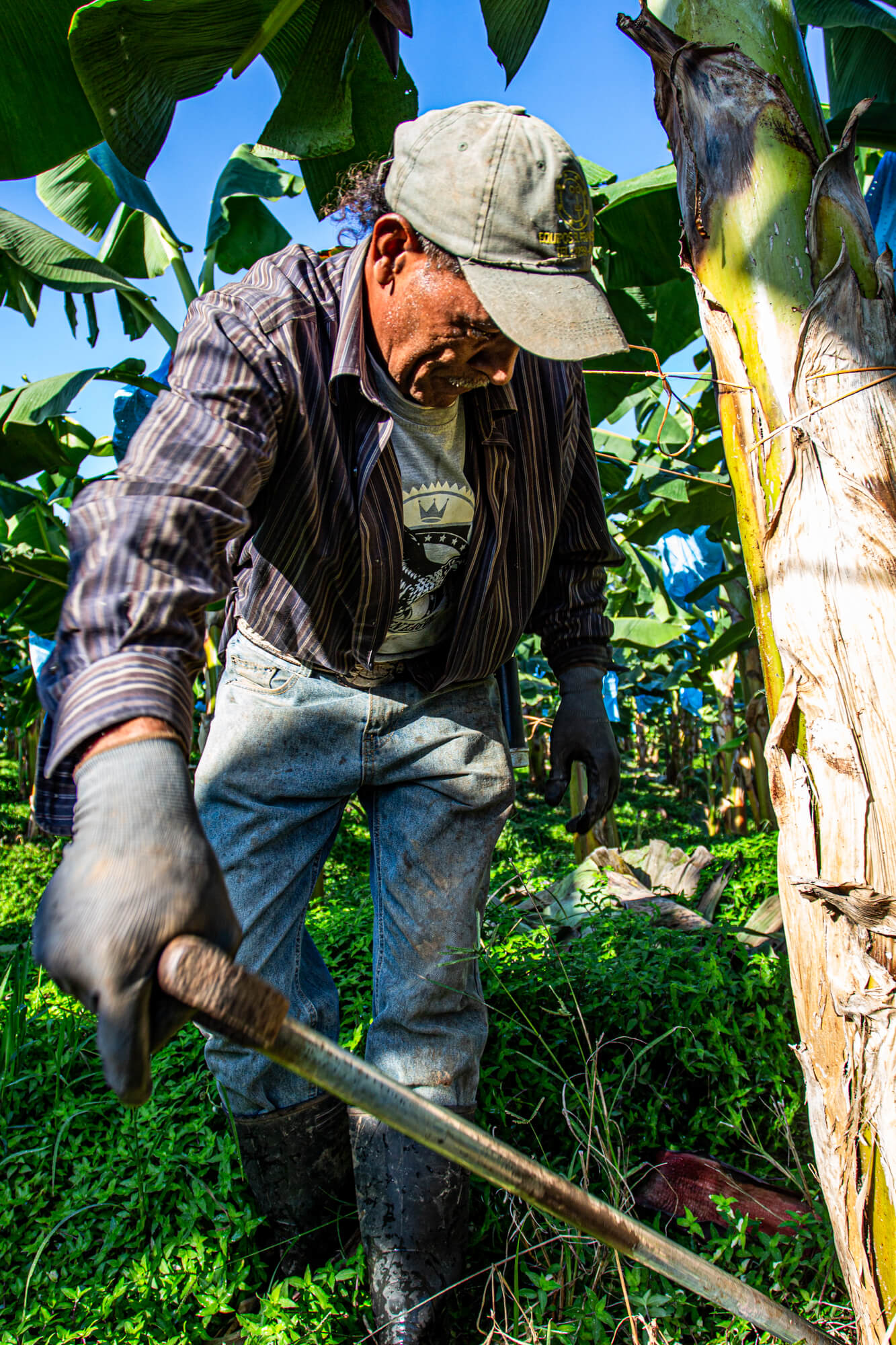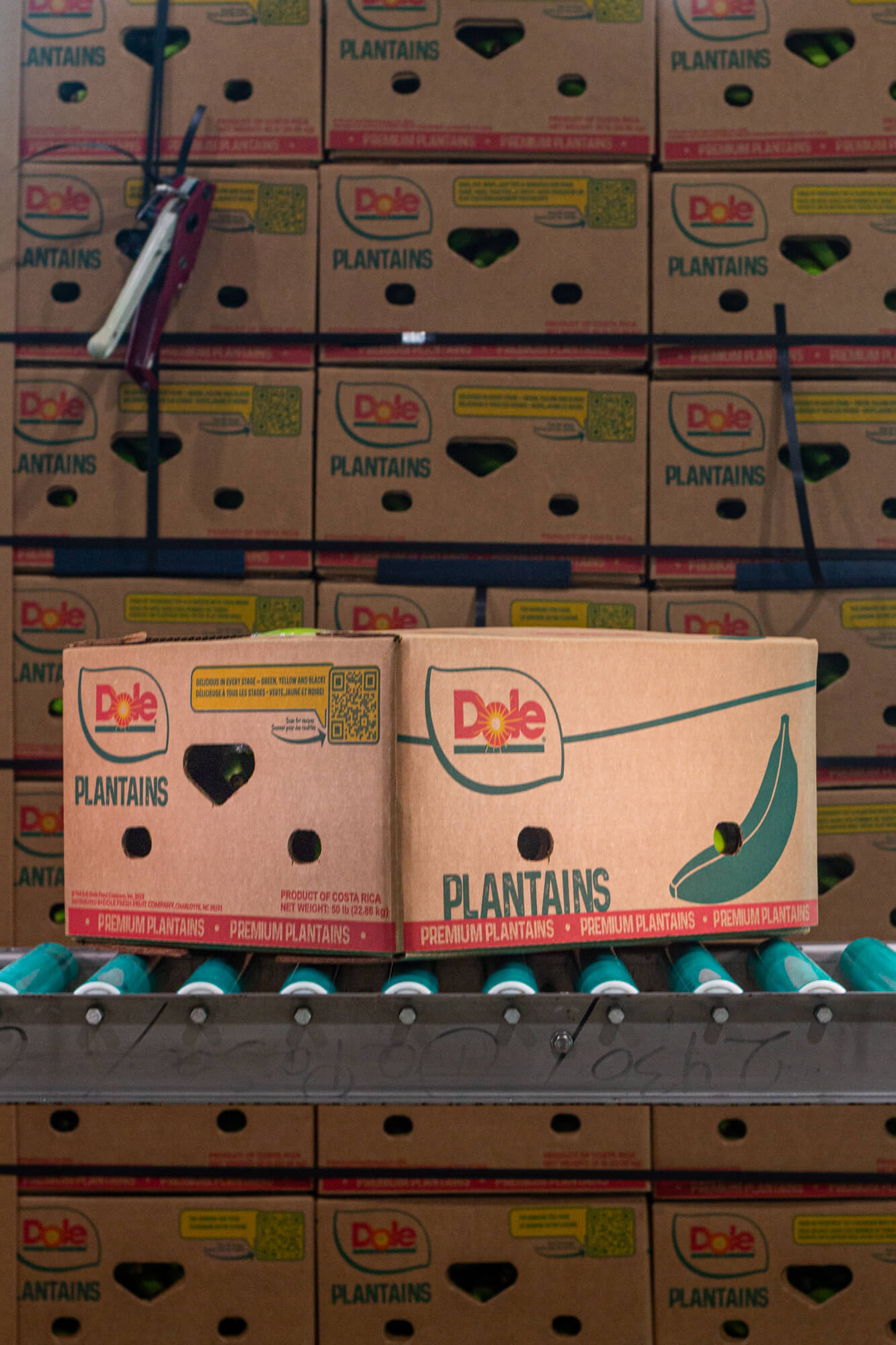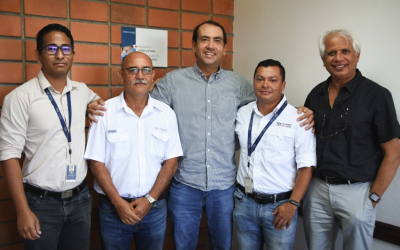Plantain
A RECENT HISTORY WITH A GREAT FUTURE AHEAD
The banana project belongs to the company DAPASA (Agricultural Development of Parrita, S.A.), and we have successfully been producing bananas for the local, international, and snack industry markets for 5 years now. It is located in the Central Pacific of Costa Rica in the canton of Parrita in the province of Puntarenas.
This area is characterized by its economy being mainly based on agriculture, with rice, oil palm, and livestock being prominent. In recent years, investment in banana and plantain crops has grown. However, between 1972 and 1985, this area cultivated more than 7,800 hectares of bananas.
This area is characterized by high solar radiation, which is essential for the proper development of the crop. It has two well-defined climatic seasons: a dry season from December to April and a rainy season from May to November. The months of April and December are transitional months. It is a warm area with temperatures ranging from 25°C to 33°C. From 2018 to 2022, the average annual precipitation is around 3,700 mm.
We cultivate the variety of plantain known as Curraré Enano (Musa paradisiaca), which belongs to the Musaceae family, a relative of the banana crop (Musa sp.)It is characterized by being a low-growing plant, with clusters considered 'medium-sized,' with average weights between 14 and 178 kg and with 35-40 fingers per cluster.
Hectares
Years of production
Export Markets

Agronomic Management
We rely on the principles of precision agriculture. It all starts with a detailed site characterization, where we cross-reference climatic variables with soil characteristics and variety traits. Based on this information, we decide on the best soil conditioning practices for the crop's benefit. For example, the construction of drainage systems, soil mechanization, formulation of fertilization and amendment programs, and required infrastructure.
The planting material comes from tissue culture, ensuring the genetic purity of the variety and providing us with material free of pests and diseases. This has allowed us to maintain a crop with very low levels of nematodes, so we do not need to apply pesticides for this purpose.
The engineering department has established a series of cultural practices such as leaf pruning, sucker removal, pseudostem cleaning, and manual soil loosening, all aimed at reducing the use of pesticides within the plantation.
Environmental Responsibility
Within our management plan, we include the contribution of organic matter, such as coffee pulp compost, organic fertilizer, and crop residues. This allows us to improve soil physics, increase the content of beneficial microorganisms, and enhance soil fertility.
Within the crop, we use a natural cover called Callisia sp., which significantly reduces the use of herbicides, protects the soil from erosion, and reduces water evaporation.
We are proud to report that we now conduct 100% of our aerial applications using drones. This ensures greater precision in applications, drastically reduces our carbon footprint, and allows us to apply only to areas that require it, under principles of precision agriculture.


Social
We ensure that our employees are from the local area, thereby stimulating the local economy. All our employees are of legal age and benefit from all social and labor guarantees established by law. We provide fair and competitive salaries and condemn child labor.
We constantly invest in occupational health talks for our employees, aiming to reduce and mitigate occupational hazards, promote proper food handling, and create a suitable work environment.
The company invests in social programs such as the athletics team and soccer team, promoting sports and health. We have a program to empower entrepreneurs in the community, focusing mainly on training single mothers in various topics such as administration, gastronomy, food handling, etc. Additionally, we offer psychological support programs, training in addiction prevention, and family well-being workshops.
What are we working on?
We are working on the path to carbon neutrality, focusing on four main areas:
- Increasing or maintaining forested areas, forest plantations, trees on the farm, and carbon in the soil.
- Reducing nitrous oxide emissions generated by nitrogen fertilizers through splitting applications and/or diluting them and injecting them directly into the soil.
- Reducing or eliminating aerial applications by plane or helicopter through the use of drones.
- Reducing electricity consumption through the installation of solar panels.
Latest News:
New lab in conjunction with the TEC
El pasado 22 de junio firmamos un convenio con el Instituto Tecnológico de Costa Rica para crear un laboratorio de biocontroladores. Agradecemos la nota del TEC en su sitio web.
Our Certifications









